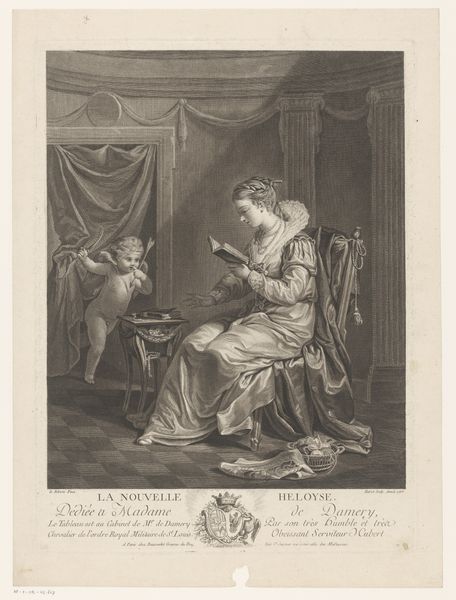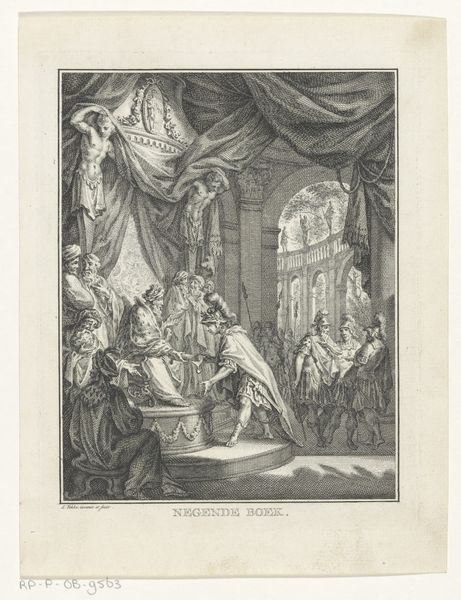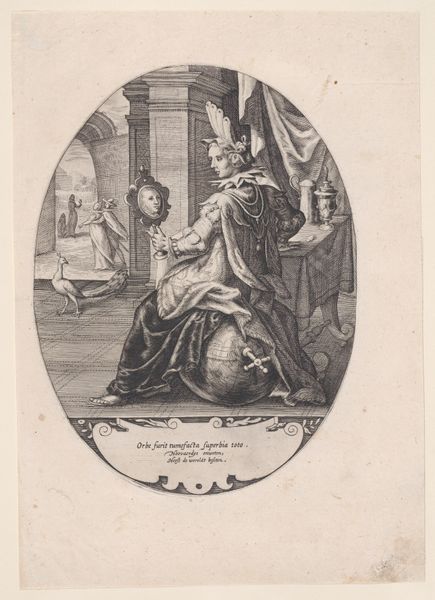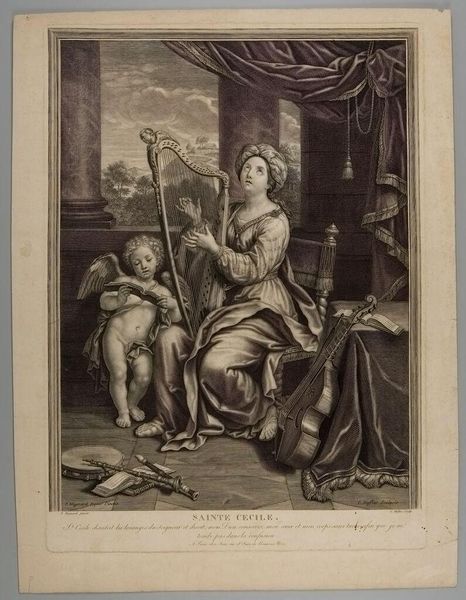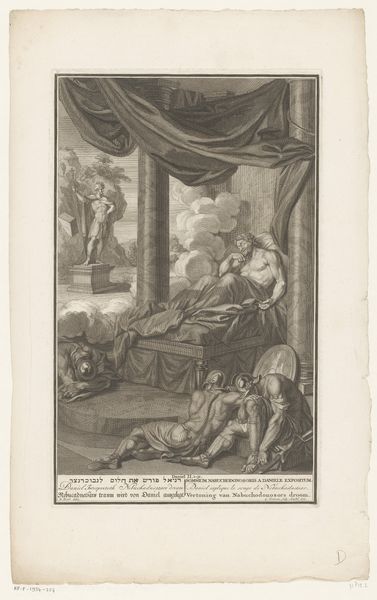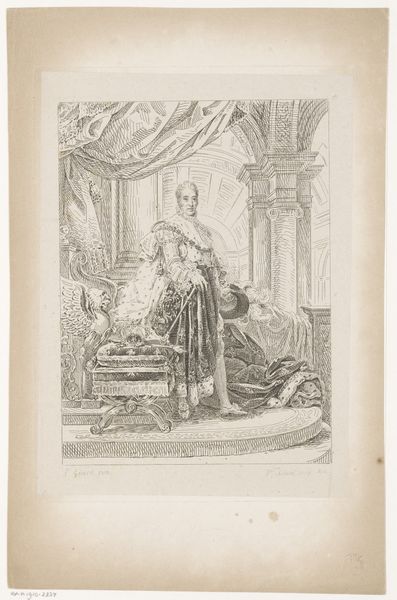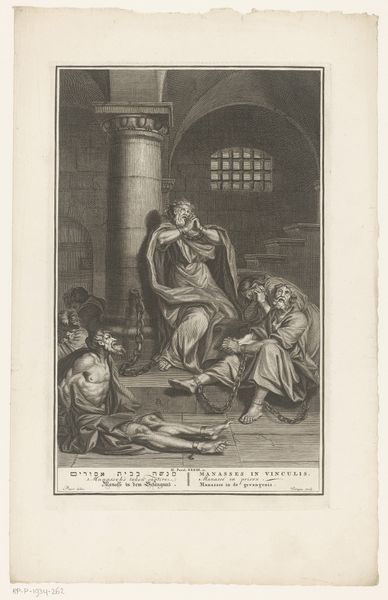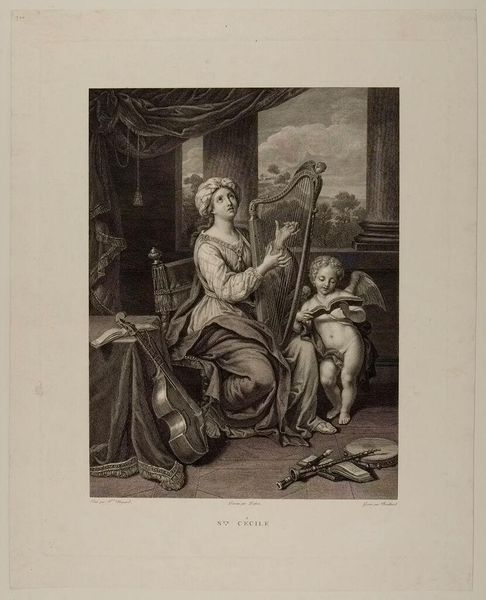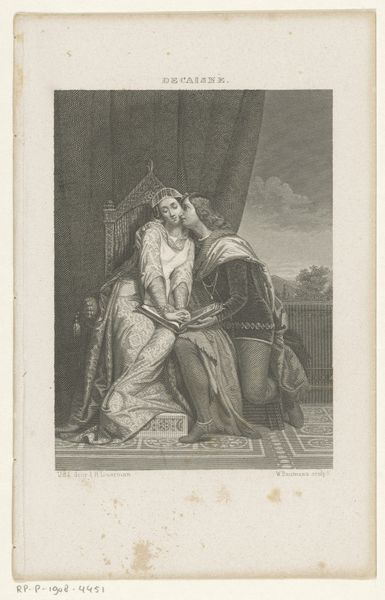
#
pencil drawn
#
photo of handprinted image
#
toned paper
#
light pencil work
#
photo restoration
#
wedding photography
#
pencil sketch
#
old engraving style
#
pencil drawing
#
19th century
Dimensions: height 555 mm, width 405 mm
Copyright: Rijks Museum: Open Domain
Claude Duflos created this print of Saint Cecilia sometime between the late 17th and early 18th centuries using etching and engraving techniques. Look closely and you can see the lines incised into the metal plate, which would have been a labor-intensive process. The print shows Saint Cecilia, patron saint of music, playing the harp accompanied by an angel holding a book of music. Other instruments, like what appears to be a lute, are scattered at her feet. While the image depicts a scene of divine inspiration, its creation was rooted in skilled labor. The etcher and engraver meticulously translated an image onto the plate, requiring technical expertise and precision. This print, like many others from the period, would have been part of a larger industry, catering to a growing market for affordable art. The division of labor, with artists like Duflos specializing in printmaking, reflects the developing capitalist economy of the time. Understanding the making of this print reminds us that art is always embedded in social and economic realities, and it challenges us to consider the value of skilled work in both art and craft.
Comments
No comments
Be the first to comment and join the conversation on the ultimate creative platform.
